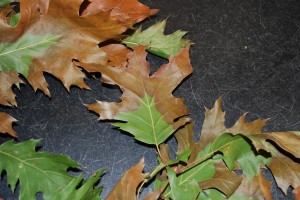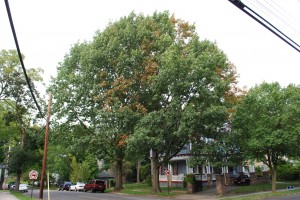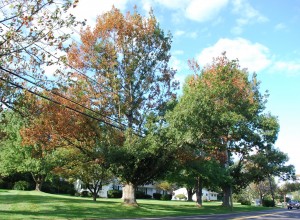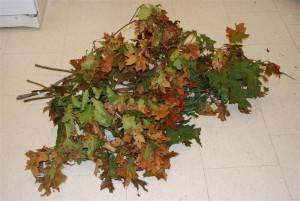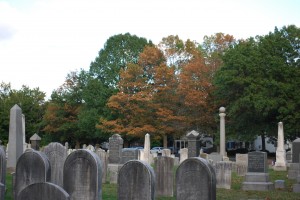Bacterial leaf scorch (BLS) season is officially upon us. Over the last 7 to- 10 days, I have been seeing increasing numbers of red oaks in central New Jersey exhibit the tell-tale symptoms of the disease.
Bacterial leaf scorch is caused by the xylem-limited bacterium, Xylella fastidiosa. This disease has been with us for some time, so most landscape and arborist folks have some knowledge of the problem. Despite that, we often get phone calls concerning the disease and the possibility of testing. Unfortunately, the testing protocol we use in our laboratory requires plant material that exhibits symptoms. Once the symptoms occur in the tree, then the titer of bacterial cells in the xylem of infected trees is high enough for detection. The window is tight – mid-August to the end of September – and now is the time.
The first indication of BLS infection is a sudden, irregular scorching of the leaves during early August. Individual branches are affected and the scorching is random in the canopy and from leaf to leaf. Scorched leaves are often shed, but many of them hang onto the branches. The leaf scorch caused by BLS is distinct from that caused by environmental issues – heat and drought – in that the damage from abiotic stress factors cause an overall and uniform scorch in the tree canopy. Every branch and every leaf has damage. Furthermore, drought stress obviously occurs when it is dry, but BLS symptoms occur regardless of the weather.
If you suspect BLS, select several pencil-sized branches with scorched leaves for submission to the lab. We will run the testing protocol and let you know; usually within 48 hours tops.
‘Tis the season to test, but don’t be jolly. The prognosis for an infected tree is not good. Seven to ten years and we will be planting the tree in another location.
If you know what I mean……
